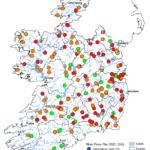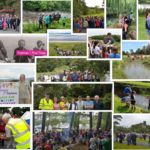The EPA runs a national hydrometric monitoring programme which measures…
Source to Sea – educational videos and resources for primary schools created by Scoil na Mara in Cork
Source to Sea is a series of primary school educational videos and class room activities about water quality and biodiversity. Scoil na Mara led the initiative, supported by Cork County Council and the Local Authority Waters Programme (LAWPRO).
This article was originally published in the Winter 2021 Catchments Newsletter.
Over three episodes of their Source to Sea video series, Scoil na Mara bring viewers on an exploration of different river, estuarine and coastal ecosystems. Highlighting the links between water quality, biodiversity, health, and well-being. The videos are proving popular with teachers and students alike as valuable and engaging educational resources.
Critters and Dippers
Scoil na Mara launched the series of videos during National Biodiversity Week, to celebrate Ireland’s biodiversity and highlight the value of good water quality. The videos were filmed in the Clonakilty Estuary Catchment by Séan Casey. The series was written and presented by Mairéad O’Donovan. The series was promoted locally with an art competition for the nine primary schools of the catchment. A tremendous number of super entries were received, making the judges job very difficult!
The Source to Sea Initiative is endorsed as an activity of the United Nations Decade of Ocean Science for Sustainable Development. The Decade, coordinated by UNESCO, recognises contributions which, at a local level, increase awareness of the ocean and its influence on human life and contribute to better understanding and more sustainable management of the ocean. The decade runs from 2021 to 2030 and provides a common framework to ensure that ocean science can fully support countries’ actions to sustainably manage the Oceans and particularly to achieve the 2030 Sustainable Development Objectives.
The series is available to all schools on the Scoil na Mara YouTube Channel and links to additional resources are also provided beneath each.







